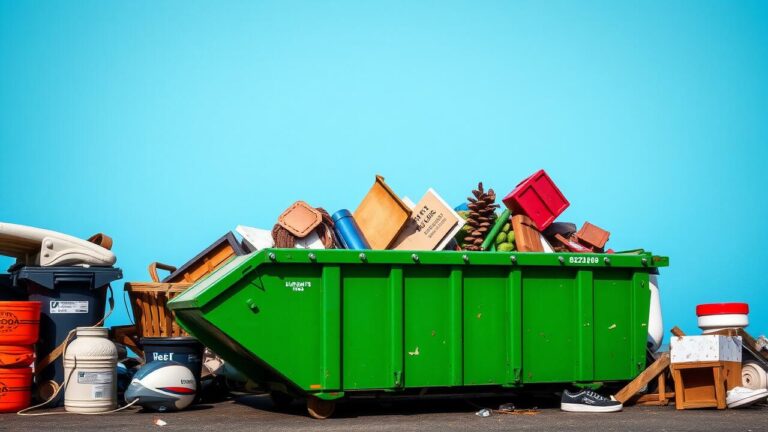What Size Residential Dumpster Do You Need?
Consequences of Picking the Wrong Size
Choosing the incorrect size of a dumpster can lead to a variety of problems, affecting both time and budget. A smaller container may fill up quickly, necessitating additional trips or even a last-minute upgrade, causing delays in project timelines. On the other hand, selecting a dumpster that is too large can result in wasted space and unnecessarily high rental costs, which can strain financial resources.
Beyond financial implications, the wrong size can also create logistical challenges. For example, if a dumpster is overfilled, it may violate local regulations, leading to potential fines or the need to arrange for a different pickup. Ensuring the right size from the beginning can streamline operations and help maintain a organized work environment, ultimately contributing to the success of your project.
Potential Extra Costs and Inconveniences
Choosing the wrong dumpster size can lead to significant extra costs. If you underestimate the volume of debris, you may need to rent an additional dumpster or upgrade to a larger one. This scenario not only inflates your budget but also delays project timelines, as waiting for a new dumpster can slow down work progress. On the other hand, renting a dumpster that is too large may seem like a good idea initially but can result in paying for unused space, impacting overall project expenses.
There are also logistical inconveniences associated with incorrect sizing. A smaller dumpster may fill up quickly, requiring frequent trips to dispose of excess waste, which can be time-consuming and exhausting. Large dumpsters, meanwhile, can take up more space than necessary on your property, potentially obstructing movement and access. Managing these issues effectively requires foresight and planning, highlighting the importance of selecting the right size from the start.
When to Rent a Dumpster
Understanding the right moments to rent a dumpster can simplify the disposal process for various projects. Major home renovations, such as remodeling a kitchen or constructing an addition, often generate substantial debris. Large cleanouts, like clearing out a garage, attic, or basement, also warrant a dumpster rental due to the sheer volume of waste that accumulates. Events like roof replacements or significant landscaping changes create additional materials that need prompt and efficient disposal.
For smaller projects, assessing the amount of waste generated can help in determining whether a dumpster is necessary. DIY projects, like bathroom updates or flooring replacement, may not require a dumpster if the waste is minimal. However, it becomes crucial to evaluate the total output if multiple minor projects occur simultaneously. Keeping local disposal regulations in mind will aid in deciding when a dumpster rental aligns best with project timing and disposal needs.
Identifying Projects That Require a Dumpster
Residential projects that generate significant debris often necessitate the use of a dumpster. Home renovations and major cleanouts usually result in large volumes of waste, including old appliances, furniture, and construction materials. Whether embarking on a kitchen remodel or clearing out a garage filled with years of accumulated items, the scale of the project typically dictates the need for a dedicated disposal solution.
Outdoor work is another scenario where renting a dumpster can prove beneficial. Landscaping projects often create excess soil, branches, and other organic materials that can clutter a yard. Additionally, during home additions or yard cleanups, having a dumpster on-site simplifies the process of waste removal, ensuring that the work area remains organized and efficient. Identifying these types of projects can guide homeowners toward the right disposal options.
Tips for Efficient Dumpster Use
To make the most of your rented dumpster, consider organizing your waste before disposal. Sorting items into categories such as recyclables, donations, and general waste can streamline the process. This organization not only maximizes the available space in the dumpster but also ensures that you adhere to local recycling guidelines. By planning ahead, you can prevent overflow and maintain a neat work environment.
Filling the dumpster efficiently requires strategic placement of your items. Start with larger, bulkier pieces at the bottom. This provides a stable base and allows smaller items to fill in around them. Breaking down boxes and flattening materials can also create additional space. Being mindful of weight distribution can prevent the dumpster from becoming top-heavy, which may incur extra charges or complicate the collection process.
Maximizing Space in Your Rental
Efficiently utilizing the space in your dumpster can make a significant difference in your cleanup process. Start by breaking down larger items into smaller pieces whenever possible. Furniture can be disassembled and cardboard can be flattened, allowing you to fit more materials into the bin. Additionally, strategically loading heavier items at the bottom helps stabilize the load, while lighter materials can fill gaps on top.
Consider sorting your waste into different categories. This allows you to maximize the available space while ensuring that recyclable materials do not take up room needed for general waste. Placing similar items together can create a more organized approach to loading your dumpster. Before you start loading, plan out how you will arrange everything for the best use of space. Keeping the area around the dumpster clear enables easier access and avoids creating obstacles that could hinder your efforts.
Local Regulations and Guidelines
When planning to rent a dumpster, it’s essential to familiarize yourself with local regulations, which can vary widely between municipalities. Many areas have specific guidelines on where and how dumpsters can be placed. Some communities may require permits, particularly if the dumpster will be situated on a public road or sidewalk. Not adhering to these regulations can lead to fines and unnecessary complications during your project.
Understanding placement rules is equally crucial, especially when dealing with residential properties. Local ordinances might dictate the distance a dumpster must be from certain structures or property lines. Additionally, restrictions on the type of materials you can dispose of in a dumpster often exist to ensure environmental compliance. Being informed about these rules ahead of time can help ensure a smooth and efficient rental process, avoiding potential delays.
Understanding Permits and Placement Rules
Before renting a dumpster, it is essential to familiarize yourself with local regulations. Each municipality may have specific requirements regarding permits, placement, and rental durations. Some areas require homeowners to secure a permit before placing a dumpster on the street or sidewalk, while others allow it on private property without additional paperwork. Ignoring these regulations could result in fines or the need to relocate the dumpster at an inconvenient time.
Placement of a dumpster must also be considered to avoid obstructing traffic or violating setback laws. Parking near driveways, fire hydrants, or crosswalks is often prohibited. Always check local guidelines for specific placement rules to ensure safety and compliance. Knowing where a dumpster can be placed will help in planning your project efficiently and in avoiding disruptions.
FAQS
How do I determine what size dumpster I need for my project?
To determine the right size dumpster, consider the type and amount of debris you’ll be disposing of, as well as the space available for placement. It’s also helpful to consult with a dumpster rental company for their recommendations based on your specific project.
What are the consequences of renting a dumpster that is too small?
Renting a dumpster that is too small can lead to extra costs due to overage fees, the inconvenience of needing to order a second dumpster, or delays in your project timeline. It’s often more economical to choose a slightly larger size than to risk running out of space.
Are there specific projects that require a dumpster rental?
Yes, projects like home renovations, major cleanouts, landscaping jobs, or construction activities typically require a dumpster rental. If you’re dealing with large volumes of debris or heavy materials, a dumpster can make the cleanup process more efficient.
How can I maximize space in my dumpster rental?
To maximize space, break down large items, stack materials when possible, and avoid overfilling the dumpster. Distributing the weight evenly can also help make the most of the space provided.
What local regulations should I consider when renting a dumpster?
Local regulations may include permit requirements, placement rules, and restrictions on what materials can be disposed of. Always check with your local waste management authority before renting a dumpster to ensure compliance with local laws.







